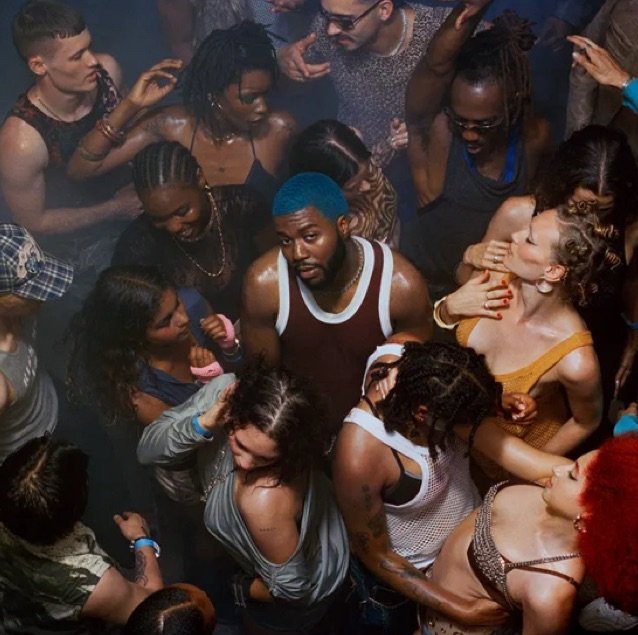
Mary Shelley’s “Frankenstein” is one of the most frequently adapted novels of all time. From James Whale’s monumentally iconic Universal works, “Frankenstein” and “The Bride of Frankenstein” in the early 1930s, to Terence Fisher’s Hammer Films adaptation, “The Curse of Frankenstein” in 1957, to Mel Brooks’ insatiably hysterical yet earnestly authentic take, “Young Frankenstein” in 1974, to Tim Burton’s “Frankenweenie” feature film in the 2010s, all the way up to Yorgos Lanthimos’ Academy Award-nominated 2023 masterpiece “Poor Things,” “Frankenstein” is part and parcel of pop culture. In fact, it’s a story that one can practically learn through cultural osmosis alone at this point, with key beats from the story having become so ubiquitous that every audience is overtly familiar with them.
It is in these unique circumstances that the 2024 film, “Lisa Frankenstein,” enters. Written by Diablo Cody (she of “Juno” fame and “Jennifer’s Body” mastery) and directed by Zelda Williams in her feature directorial debut, “Lisa Frankenstein” takes audiences’ overt familiarity with its source material and twists it in interesting ways. Much in the same way that Frankenstein’s monster was assembled from various odds, ends, and appendages, so too is “Lisa Frankenstein” a love letter to kitschy ’80s teen comedies filtered through an undying affection for camp classics like “The Rocky Horror Picture Show” and with a penchant for bursting into attempts at semi-expressionistic animated interludes. The resulting film does not always work, but it is frequently more charming than it should be.
TOP FIVE THINGS ABOUT “LISA FRANKENSTEIN”
5. The Female Gaze Strikes Back
Written as part of a contest amongst a close group of friends, including her husband, Mary Shelley’s original “Frankenstein” is and always has been a distinctly potent distillation of the destructive nature of masculinity through the lens of a ruthlessly incisive female gaze. And so, in a great many ways, it is immensely satisfying to see an iteration of this story spearheaded entirely by a female creative team.
What makes this even better are the ways in which both Diablo Cody’s inventive script and Zelda Williams’ direction lean all the way into the feminine elements of the story. The ‘creature’ of the story may be male, but it is Kathryn Newton’s titular Lisa who is grappling with the contradicting conundrum of her own existence here, and the film comes to a delightfully anarchic conclusion on what value she finds in her own existence.
4. Weak Spot: Frankenstein Himself

Let’s address this upfront: I’m a fan of Cole Sprouse. I believe he’s a talented actor. However, I find his portrayal of Frankenstein to be a misfit within the framework of “Lisa Frankenstein.”
Part of the issue lies in the structure and constraints of the film itself. The opening credits attempt to deliver a rapid backstory for Sprouse’s character through somewhat underdeveloped quasi-flash animations. This presents several challenges; not only do these initial visuals fail to leave a favorable impression, but they also inundate the audience with a surplus of information, resulting in a narrative that feels more told than experienced.
Consequently, when Sprouse enters the main storyline, he appears underdeveloped, with neither the film nor Sprouse himself offering substantial resolution to this inadequacy. Many aspects of Sprouse’s performance seem to mimic superior works (such as “Edward Scissorhands” or Doug Jones’ remarkable portrayal in “Hocus Pocus”), leading to a central relationship that feels imbalanced and lacking depth.
3. Kathryn Newton as Lisa Swallows
When it comes to the central relationship, Kathryn Newton shines brilliantly as Lisa, contrasting with the film’s portrayal of Frankenstein.
Newton’s performance in “Lisa Frankenstein” is nothing short of remarkable, showcasing her talent and versatility, as seen in her previous work in Christopher Landon’s “Freaky.” She brings a unique blend of exuberance and nuance to the character of Lisa, effectively portraying her journey of self-discovery and personal growth.
Throughout the film, Newton’s ability to convey complex character arcs through subtle details is truly impressive and adds depth to the narrative. As the film progresses, she becomes the heart and soul of the story, captivating the audience with her charm and charisma.
By the film’s conclusion, Newton’s portrayal of Lisa has endeared her character to the audience, making the climactic tanning bed scene feel both earned and emotionally resonant. Her performance elevates “Lisa Frankenstein” and contributes significantly to its charm and appeal.
2. Williams’ Ambition
Zelda Williams’ direction plays a crucial role in the charisma and charm of “Lisa Frankenstein.” Teaming up with cinematographer Paula Huidobro, Williams creates a visual aesthetic steeped in fluorescent neon and absurdist elements. While the film may not always hit the mark, when it does, it’s a delightful experience. Williams demonstrates a clear vision and isn’t afraid to take bold creative risks to bring it to life, imbuing the film with a visceral sense of authenticity.
For a debut feature, Williams showcases impressive talent. From inventive visual sequences that depict Lisa’s inner turmoil externalizing into her surroundings, to subtle nods to classic films like “Bride of Frankenstein” and Georges Méliès’ “A Trip to the Moon,” Williams demonstrates a deep appreciation for cinematic history while infusing her own distinct style into the narrative. Overall, her work on “Lisa Frankenstein” is commendable and indicative of promising future endeavors in filmmaking.
1. Weak Spot: The Editing
The editing in “Lisa Frankenstein” emerges as a singularly detrimental element to the overall viewing experience. At times, the film feels more akin to a rough or assembly cut rather than a polished, professionally edited release.
The absence of internal rhythm and pacing renders the film a slog, with comedy, in particular, suffering due to the lack of effective editing. Well-written and staged gags fall flat as the editing fails to punctuate them effectively, robbing them of their comedic impact. Moreover, excessive padding contributes to the film’s bloated runtime, with extended moments of dead air deflating any sense of momentum or tension.
The film’s conclusion compounds these issues, featuring multiple alternate endings that contradict each other both narratively and thematically. This decision leaves the film feeling unfinished and undermines the impact of its stronger elements. Overall, the unrefined editing of “Lisa Frankenstein” detracts significantly from its potential and hampers the enjoyment of its comedic and thematic content.
RGM GRADE
(C-)
Overall, I enjoyed “Lisa Frankenstein.” It had a fun and charming quality to it, although I found it frustrating how the film often undermined itself just when it seemed to be hitting its stride.
I can envision it gaining a cult following in the coming years, as it has the potential to be a campy delight. Personally, I hope that a director’s cut or some form of re-editing is pursued in the future to tighten up the film substantially. Despite its flaws, I believe there’s something special within “Lisa Frankenstein” that just needs the right adjustments to fully come to life.
Discover more from RATINGS GAME MUSIC
Subscribe to get the latest posts sent to your email.










